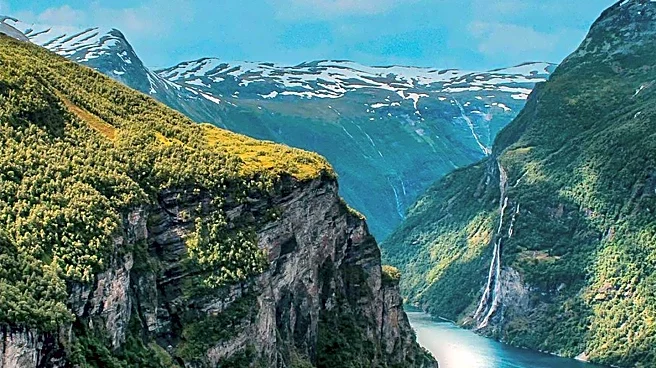What is the story about?
What's Happening?
Norway's St Olav Ways are gaining popularity as a cooler alternative to Spain's Camino de Santiago, which has been affected by extreme heat. The Gudbrandsdalen path, one of nine St Olav Ways, offers a quieter and cooler pilgrimage experience, with temperatures around 13C in late August. The paths converge on Trondheim, where St Olav is buried, and provide a Nordic-style pilgrimage with moss-covered stones, spruce forests, and cold rivers. In contrast, Spain's Camino faced a 45C heatwave, leading to wildfires and route closures. Norway's trails offer respite from such climate extremes, attracting hikers seeking cooler temperatures and pristine environments.
Why It's Important?
The shift towards cooler pilgrimage routes like Norway's St Olav Ways highlights the impact of climate change on traditional travel paths. As extreme weather conditions become more common, travelers are seeking alternatives that offer safety and comfort. Norway's trails provide a unique blend of natural beauty and cultural heritage, appealing to those looking for a less crowded and environmentally friendly pilgrimage experience. This trend may influence future travel patterns, encouraging destinations to adapt to changing climate conditions and promote sustainable tourism options.
AI Generated Content
Do you find this article useful?














